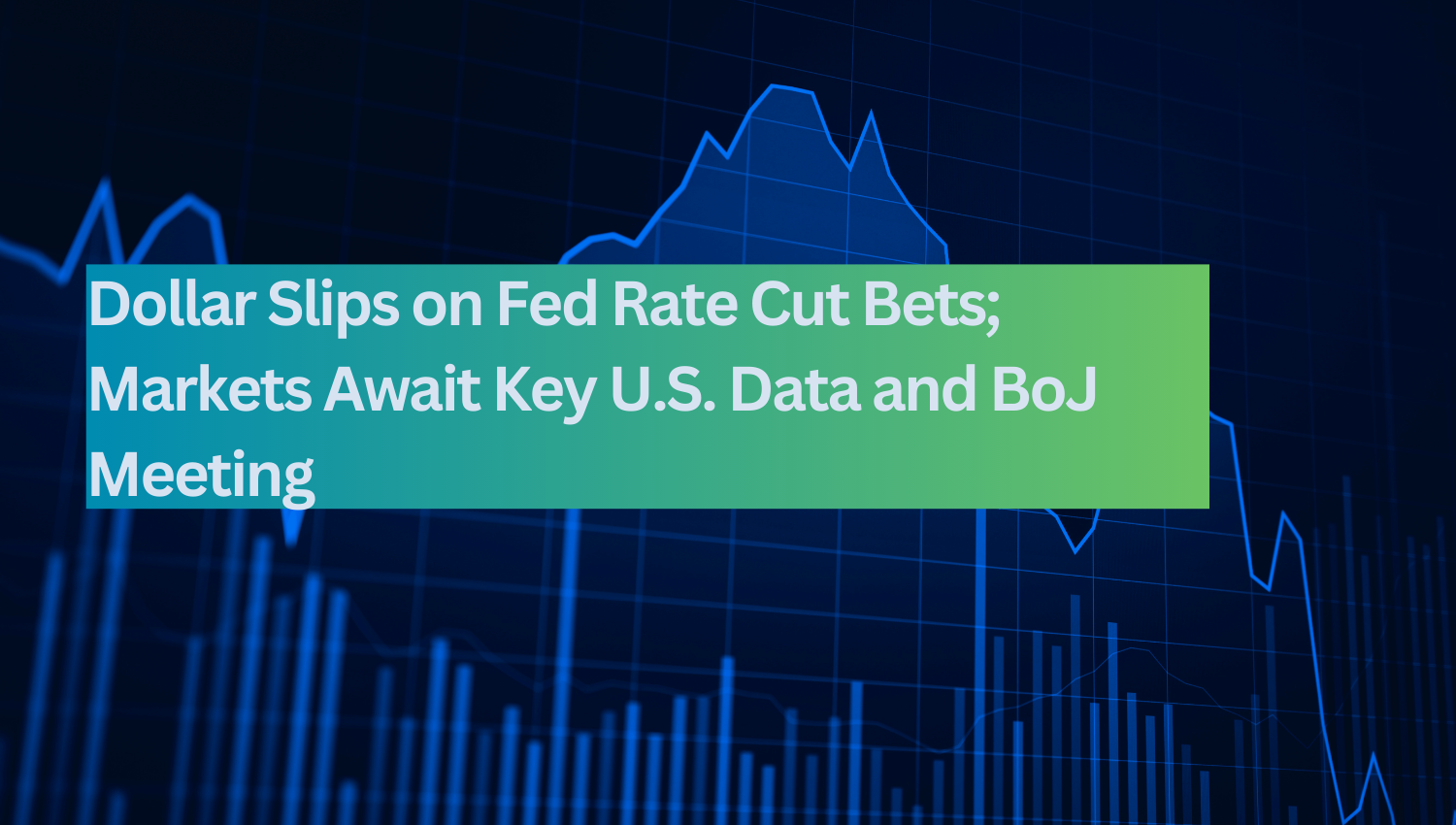Macro Outlook

Market Overview
On Friday, the dollar slipped against most major currencies after U.S. PCE inflation data reinforced expectations for Fed rate cuts by September and potentially three times this year. The upcoming Fed meeting on Tuesday and Wednesday poses an immediate risk, although rate futures suggest no move, making the focus on signals about the September FOMC gathering. The U.S. non-farm payrolls report on Friday could also shape expectations. Meanwhile, uncertainty surrounding the Bank of Japan (BoJ) meeting has led to a temporary stabilization of yen shorts. Despite core PCE inflation slightly exceeding expectations, the overall year-over-year number eased as anticipated, with personal income growth falling more than forecast. University of Michigan consumer sentiment rose slightly, defying forecasts for a flat reading, while one-year inflation expectations remained stable at 2.9% and the five-year view edged up to 3.0% from 2.9%. U.S. Treasury yields fell 4-6 basis points across maturities.
Key Market Drivers
- Fed Rate Cut Expectations: The U.S. PCE inflation data reinforced market expectations for Fed rate cuts by September, potentially occurring three times this year.
- Upcoming Fed Meeting: The immediate focus is on the Tuesday-Wednesday Fed meeting, with attention on signals for the September FOMC gathering.
- U.S. Non-Farm Payrolls Report: The upcoming report will be pivotal in shaping rate cut expectations.
- BoJ Meeting Uncertainty: Uncertainty around the BoJ meeting has led to temporary stabilization of yen shorts.
Market Outlook
The market outlook remains focused on central bank meetings and economic data releases. The Fed meeting next week is crucial, with markets keenly watching for any signals about future rate cuts, particularly for September. The U.S. non-farm payrolls report will also be pivotal in shaping rate cut expectations. The BoJ meeting brings uncertainty, with potential implications for the yen. Despite mixed inflation data, the overall sentiment leans towards expecting rate cuts, supported by falling Treasury yields. The S&P 500’s rally, driven by a rebound in tech and chip stocks, indicates optimism about the rate cut timeline. Commodity markets are influenced by global demand concerns, particularly from China, and geopolitical developments in the Middle East.
Key Market Movements
- Dollar Index: Fell against most major currencies, reflecting market anticipation of Fed rate cuts.
- EUR/USD: Edged higher, supported by dovish Fed expectations.
- GBP/USD and AUD/USD: Gained modestly, reflecting improved risk sentiment.
- USD/JPY: Dipped slightly as yen shorts stabilized.
- U.S. Treasury Yields: Fell 4-6 basis points across maturities.
- S&P 500: Rallied on tech stock rebounds and inflation data supporting rate cut bets.
- Commodities: WTI and copper fell on weak Chinese demand and potential geopolitical easing, while gold rallied on lower yields and rate cut optimism.
Currency Summary
The dollar experienced mixed performance against major currencies. EUR/USD edged higher due to dovish Fed expectations, while GBP/USD and AUD/USD also gained modestly, reflecting improved risk sentiment. USD/JPY dipped slightly as yen shorts stabilized. Commodity-linked currencies like AUD/USD saw gains despite broader commodity market pressures. U.S. Treasury yields fell, contributing to the S&P 500 rallying on tech stock rebounds and inflation data keeping rate cut bets alive. Commodities like WTI and copper fell on weak Chinese demand and potential geopolitical easing, while gold rallied on lower yields and rate cut optimism.
Currency Outlook
The currency outlook suggests continued volatility driven by central bank meetings and economic data. The dollar may remain under pressure if the Fed signals readiness for rate cuts, especially if the non-farm payrolls report supports easing. The yen could see further stabilization or strengthening depending on BoJ actions. The euro and pound may see modest gains if U.S. rate cut expectations persist. Commodity-linked currencies like the Australian dollar could face headwinds from weak Chinese demand but may benefit from broader risk sentiment improvements. Investors should stay vigilant, adjusting positions based on evolving central bank signals and economic indicators.
Conclusion
Market participants are navigating a complex environment shaped by central bank meetings, economic data releases, and geopolitical developments. The dollar's performance reflects anticipation of Fed rate cuts, while the yen's movements are influenced by BoJ uncertainty. Key economic data, particularly the U.S. non-farm payrolls report and PCE inflation data, will play crucial roles in shaping market expectations. Investors should remain vigilant, prepared to adjust positions based on new information and central bank communications.
Open an account today to unlock the benefits of trading with CMS Financial

